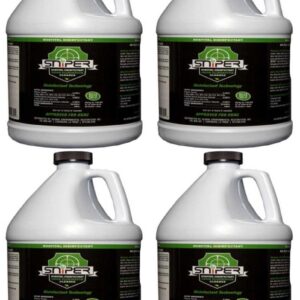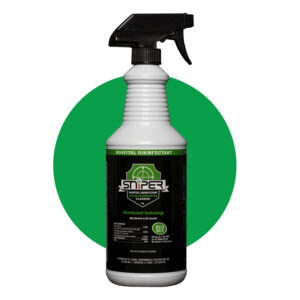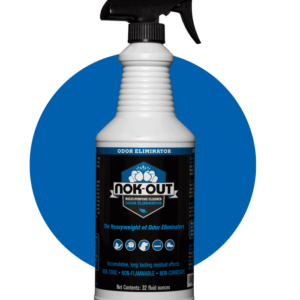The last thing you want to hear when someone walks into your home is, “What’s that smell?” It’s even worse when you don’t know how to answer the question because you have been wondering the same thing.
If you’ve found yourself in this predicament, it’s time to follow your nose and get to the bottom of “that smell” once and for all. Let’s look at a path to freshness that you can follow in order to identify the source of odors, treat and eliminate them, and prevent them from returning in the future.
Locate the source
“Articulating” with your nose is the best way to begin when attempting to identify the source of an unwanted odor. For instance, if you can describe the smell as smelling musty or like dirty socks, it is likely that you have a mold problem or built-up bacteria in your home.
To find the source of this kind of odor, look in the most likely sources: leaky plumbing, areas with poor ventilation such as the bathroom, and window frames that may have accumulated moisture from the elements.
You might also experience a burning smell. This could be from appliances overheating, a dirty HVAC filter, plastic melting in the ductwork, or exposed electrical wiring throughout the house that’s actually melting the insulation around it.
Perhaps the most dangerous odors are chemical or sulfuric in nature. Hopefully, a rotten egg smell is coming from a running faucet. If it’s not, it could be a gas leak.
There is another common odor, the “old food” smell. To find the source more specifically, take a good whiff from above your garbage disposal and pop your head in the dishwasher. These are the most likely sources for smelly food odors.
Finally, your carpet soaks up more and more odors as time passes, including pet odors and smells left behind from the many feet that traverse it.
Treat odors accordingly
Once you have honmed in on the sources of odors in your home, you can take action to eliminate these unwelcome smells.
- Mold—If you have discovered that you are dealing with mold, you first need to repair leaks in your plumbing. Seal your windows and doors as well to keep more moisture from accumulating. Once sources of moisture have been properly sealed, it is time to remove the mold and follow up with SNiPER Disinfectant and Odor Eliminator.
- Electrical—You should never ignore a burning smell. If you believe it could be electrical, you can troubleshoot by sniffing out each room. Your nose might lead you to an overheated clothes dryer in the laundry room or a very concentrated area along a wall. If it’s either of those, you might file a home warranty claim and have an electrician take a look. If the smell seems to be in every room, it’s likely coming from your HVAC and being pushed through all the vents in your home. Inspect your air filter.
- Gas—If an egg- or chemical-like smell is coming from your sink or shower, you likely just have hard water. It might be time to flush the water heater or service the water softener. If it’s not the water, it’s in the air, which could mean you have a gas leak. You should address this immediately. After all, carbon monoxide poisoning kills 400 people in the US each year.
- Food—If the dishwasher or garbage disposal tested positive for “smelly food” odors, it’s again time to break out SNiPER Disinfectant. You can also refresh your dishwasher with vinegar. If you’re already deep cleaning your kitchen, it might be a good time to thoroughly clean and disinfect your refrigerator as well.
- Carpet—To really be effective at eliminating odors from your carpet, it is important to use a solution specifically designed for not only the source of the odor but the type of carpet you have as well. If spot cleaning and vacuuming won’t do, you have the option of buying or renting a carpet steamer or you can hire a professional to do it for you.
Prevent odors from returning
Now that you have found where the odors in your home were coming from, you can make and execute a plan to prevent them from returning. One way of doing this is to keep up with routine maintenance of your home appliances and systems. Vacuum regularly, replace air filters and smoke detector batteries on a seasonal basis, ventilate rooms through open up windows, and use dehumidifiers or exhaust fans in windowless rooms, like the bathroom or basement.
Resources:
https://nokout.com/Odor-Eliminator
https://nokout.com/SNiPER-Disinfectant
https://housemethod.com/reviews/best-home-warranty
https://www.webmd.com/allergies/features/household-mold#1






Our basement smells . Our washer and dryer are down there. I have been putting out charcoal to absorb the odor. Is there more that we can do and should do?
Hi Marilyn, Nok-Out and SNiPER will deodorize any smelly thing they come into direct contact with. Often, the issue is how to find the source of the odor so using our products will remove that bad smell. Charcoal is an imperfect solution because all they do is passively absorb odor for a time, and actually, they do a pretty poor job of that. One solution is to close off that area and go outside for at least 20 minutes. Then, holding your nostrils closed, go into the basement and get close to where you think the odor originates before releasing your nostrils and try to locate where the odor seems strongest. Humans have a poor sense of smell, but even we can locate odor sources in this way.
I hope that locating the odor source properly allows you to spray Nok-Out to the right place and eliminate that odor! Call Ted at 866 551 1927 with questions.
I have some spots of mold/mildew on my bathroom ceiling. Can I use sniper or nok out on it? Which would better? Also have a cabinet that had water from broken hose under sink. It is particle board and I can smell the mold and mustyness. Which should I use on these? I already have some nok out but could order more. Ty
Hi Martha,
SNiPER is our disinfecting product that will kill the mold/mildew that cause odor. Usually, the growth of Mold/mildew is a result of a water issue. Take care of the water issue – even if that just means running the vent fan regularly to remove the moisture that molds require to grow. SNiPER can kill the mold and remove the odor. Nokout can remove the odor.
I hope that helps!